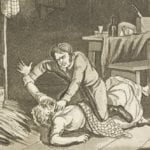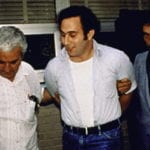 Creepy
Creepy  Creepy
Creepy  Technology
Technology 10 Scientific Breakthroughs of 2025 That’ll Change Everything
 Our World
Our World 10 Ways Icelandic Culture Makes Other Countries Look Boring
 Misconceptions
Misconceptions 10 Common Misconceptions About the Victorian Era
 Mysteries
Mysteries 10 Strange Unexplained Mysteries of 2025
 Miscellaneous
Miscellaneous 10 of History’s Most Bell-Ringing Finishing Moves
 History
History 10 Great Escapes That Ended Right Back in Captivity
 Weird Stuff
Weird Stuff 10 Fascinating Things You Might Not Know About Spiders
 Food
Food 10 Everyday Foods You Didn’t Know Were Invented by the U.S. Military
 History
History 10 Odd Things Colonial Americans Kept at Home
 Creepy
Creepy 10 More Representations of Death from Myth, Legend, and Folktale
 Technology
Technology 10 Scientific Breakthroughs of 2025 That’ll Change Everything
 Our World
Our World 10 Ways Icelandic Culture Makes Other Countries Look Boring
Who's Behind Listverse?

Jamie Frater
Head Editor
Jamie founded Listverse due to an insatiable desire to share fascinating, obscure, and bizarre facts. He has been a guest speaker on numerous national radio and television stations and is a five time published author.
More About Us Misconceptions
Misconceptions 10 Common Misconceptions About the Victorian Era
 Mysteries
Mysteries 10 Strange Unexplained Mysteries of 2025
 Miscellaneous
Miscellaneous 10 of History’s Most Bell-Ringing Finishing Moves
 History
History 10 Great Escapes That Ended Right Back in Captivity
 Weird Stuff
Weird Stuff 10 Fascinating Things You Might Not Know About Spiders
 Food
Food 10 Everyday Foods You Didn’t Know Were Invented by the U.S. Military
 History
History 10 Odd Things Colonial Americans Kept at Home
10 Frightening Serial Killers From Central Europe
In 1915, a German thinker named Friedrich Naumann wrote a book entitled Mitteleuropa. Naumann saw in Central Europe the chance for an economic trading zone free from the claws of imperial powers Great Britain, France, and Russia. Other German thinkers, especially Prussian militarists, conceived of Mitteleuropa as a pan-German state ruled from Berlin.[1]
The Habsburg family of Austria had their own conception of “Central Europe,” and so, too, did the Poles, who created the idea of Intermarium as a collection of states politically oriented between the liberal democracy of the West and the Orthodox revanchism of Moscow. Whatever the case, it seems that there is something unique about Central Europe, which roughly includes the nations of Germany, Austria, Hungary, Poland, Switzerland, the Czech Republic, Slovenia, and Slovakia.
This list will focus less on politics and history and more on the infamous serial killers that have plagued Central Europe since at least the 19th century. Few of these killers are known in the Anglophone world. That might change after you read this list.
10 The Viennese Housemaids Killer

Hugo Schenk was born into the polyglot Austrian Empire on February 11, 1849. As was common in the ancient Habsburg dominion, Schenk was an ethnic German who grew up in the mostly Czech region of Moravia. Although the scion of a relatively prosperous family of middle-class origin, Schenk proved himself prone to crime at a very early age.
Besides basic thieving, the handsome Schenk became adept at swindling women out of their money. Schenk, who was living in the imperial capital of Vienna, began telling women that he was a Polish aristocrat named Winopolsky. This ruse duped at least four unsuspecting women, almost all of whom worked as housemaids. Schenk, along with his equally ruthless sidekick Carl Schlossarek, conned women into relationships or marriages only to later rape and murder them.
Schenk’s modus operandi was simple but brutal. After raping and killing his victims, Schenk would tie boulders to their corpses and dump them in the Danube River. The reason for each killing was obvious: Schenk stole every penny that his victims owned. Schenk was a meticulous swindler, and when he was finally caught, Viennese police officers discovered that Schenk was communicating via letters to at least 50 potential victims.[2]
Schenk was hanged in 1884. His skull is still kept at Vienna’s Crime Museum.
9 The Monster Of Martfu

The 1950s were a turbulent time in Hungarian history. In 1956, thousands of Hungarians took to the streets after Soviet premiere Nikita Khrushchev publicly denounced the repressive policies of the Stalinist era. Believing that a new age of political freedom was upon Central Europe, Communist premiere Imre Nagy moved to establish a multiparty system. Moscow denounced this move, and on November 1, 1956, the Soviet Red Army invaded Hungary and reestablished a dogmatic Communist state, except this one allowed for greater local autonomy.
Given such major events, everyday Hungarians can be forgiven for not noticing that a serial killer began strangling women in 1957. Later known as the “Monster of Martfu,” Peter Kovacs killed five women over a ten-year period. The first victim, Margit Szegedi, was found dead by police on July 22, 1957. The killer would go quiet until 1963, when he began strangling women again in the small village of Martfu.[3]
When Kovacs was apprehended in 1967, it was revealed that he worked as a truck driver and lived just outside of Martfu. Kovacs was a typical lust killer who stalked his victims after becoming sexually aroused by their appearance. After seeing his first victim leave her job at a shoe factory, Kovacs chased after her on a bicycle and then struck her head from behind with a blunt object. Kovacs’s other victims were similarly abused prior to their deaths.
On December 1, 1968, Kovacs was executed via hanging by the Szolnok County Court. His capture not only earned the release of Janos Kirjak, who had served 11 years in prison for the murder of Margit Szegedi, but it also highlighted the weaknesses of the Hungarian Communist Party, which refused to believe that serial killers existed in socialist states.
8 Volker Eckert
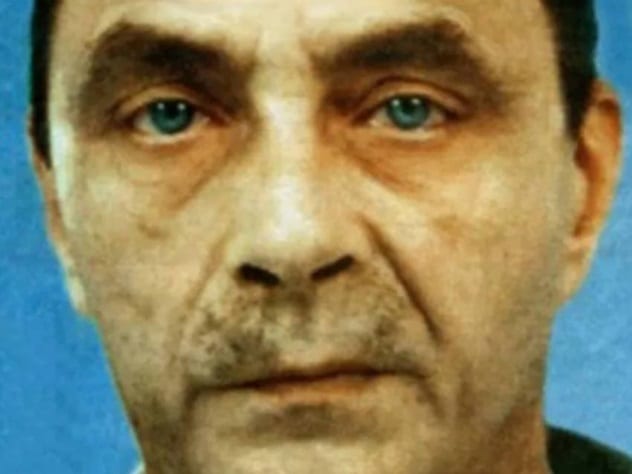
By his own admission, German truck driver Volker Eckert thought a lot about killing before finally committing his first murder. Born on July 1, 1959, in Communist East Germany, Eckert committed his first murder in 1974, when he was just 15. The victim attended the same school as Eckert and was a year younger than him. Eckert strangled the girl and made her death appear to be a suicide. This con was swallowed by the adults of the town of Plauen for decades.
All of Eckert’s subsequent murders fit a pattern: He would strangle prostitutes to death in various countries. Many of Eckert’s victims were drug addicts, illegal immigrants, or just simply overlooked women. Helping Eckert’s case was the fact that the police in different European nations often did not interact with each other during the height of his killing spree (the mid-1990s to early 2000s).
Tragically, Eckert was well-known to police officials in East Germany. Between 1988 and 1994, he served a 12-year sentence for the rape and assault of an unidentified woman. When he got out of prison, Eckert got a job as a truck driver, which allowed him to visit European countries as diverse as Italy, France, Switzerland, and Spain for work. Between 2001 and 2006, Eckert supposedly killed five prostitutes—one Kenyan immigrant in France, a 24-year-old Spanish prostitute, a Russian immigrant in Catalonia, a 28-year-old Polish immigrant in Reims, and a pregnant 20-year-old Bulgarian woman living in Spain. Eckert is also suspected of killing seven other prostitutes between 1987 and 2004.
Eckert was finally caught in 2006 after a surveillance camera captured images of his truck at the scene of the final murder. When Eckert’s truck was seized by police near Cologne, they discovered graphic photographs of Eckert’s victims, some of which showed him torturing the unfortunate women.[4] Eckert would escape justice again in 2007, when he managed to commit suicide inside his cell in Bayreuth.
7 The Vampire Of Krakow
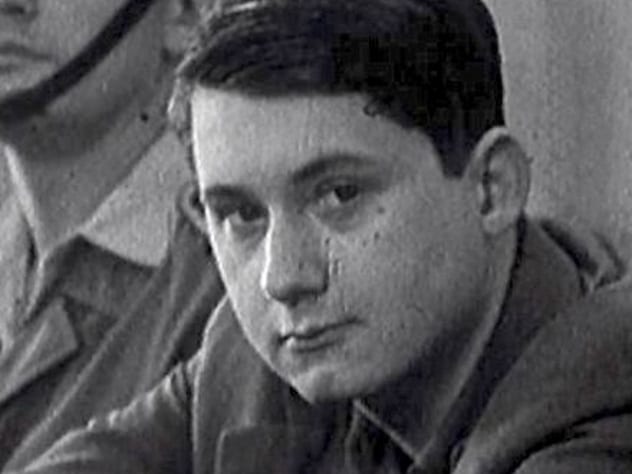
Unlike Warsaw, which was all but burned to the ground during World War II, Krakow still has all of the medieval charm that one would expect to find in Southern Poland. It was in this city on December 18, 1946, that Karol Kot was born. Like many subsequent serial killers, young Karol showed distressing signs of morbidity. One of his favorite pastimes was torturing small animals. Karol’s fondness for animal mutilation would follow him throughout his teenage years.
Kot proved to be an unreliable student, and while at university, he suffered a nervous breakdown. Kot eventually enrolled at a technical college, where he joined a shooting team. Not long after enrolling at his new school, Kot committed his first attack in September 1964. During a church service, Karol stabbed an elderly woman in the back as she knelt in prayer. The woman managed to survive.
Seventy-seven-year-old Marii Plichty was not so lucky. On September 29, 1964, Kot stabbed the elderly woman to death on Krakow’s Jan Street. His next victim, 11-year-old Leszka Calka, was found stabbed to death on February 13, 1966. In April of that same year, Kot tried to murder an eight-year-old girl, but the girl survived despite being stabbed eight times.[5]
Kot was arrested in June 1966 after a fellow student told police about Kot’s activities. Kot’s case would linger on in the Polish legal system until November 1967, when Kot was given a life sentence. This was changed to death in 1968, and Kot was executed via hanging in May of that year. He was just 21.
6 The Nurse’s Test
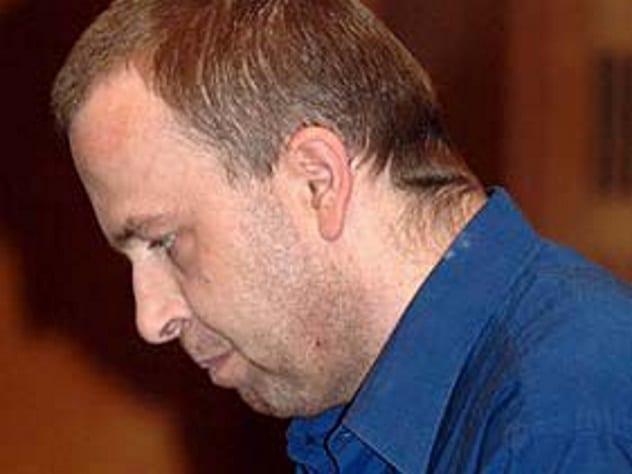
Thirty-year-old nurse Petr Zelenka thought that his job was to test the doctors who worked at his hospital. Sadly, Zelenka’s “tests” almost always resulted in the deaths of patients. Between May and September 2006, seven patients at an intensive care unit in the Czech town of Havlickuv Brod died suddenly. None of the victims had been considered especially terminal cases, and in fact, all had been expected to live. Zelenka, the man responsible for the seven deaths, was arrested in December 2006 by Czech police officers.
Investigators discovered that Zelenka had given the victims the blood-thinning drug heparin without their knowledge. Zelenka would administer the drug via a secret vial, and he would do so in such large doses that most of the victims died of internal bleeding.[6]
Zelenka would later confess to trying to kill three other patients, but each attempt ended in failure. Shockingly, Zelenka had worked at the hospital for seven years prior to the murders and had had several run-ins with the hospital’s authorities. He was sentenced to life in prison in February 2008.
5 The Midday Murderer

German serial killer Klaus Gossmann had a unique habit: He shot his victims when the noon bells tolled in his hometown. Born in Frankfurt in 1940, Gossmann was a resident of the Bavarian town of Hersbruck when he began randomly killing people. A significant portion of Gossmann’s psyche undoubtedly came from his father, a former Wehrmacht soldier who loved to tell his son stories about killing American soldiers during World War II.
At just age 19, Gossmann shot two strangers, Ernst Hering and his girlfriend Valeska Eder. As the midday church bells rang out in Hersbruck, Gossmann knocked on the couple’s apartment door, and when they answered, he killed them both. Nobody heard anything.
Two years later, Gossmann struck again, this time killing bank manager Erich Hallbauer and stealing 3,000 marks from the Deutsches Bank in Ochenbruch. Gossmann would kill another bank worker, this time a porter, that same year.
Gossmann would continue to kill between 1963 and 1966. During that time, he murdered a gun shop owner and her son and a businessman in Nuremberg. When he was captured by Bavarian police, they found that one of his guns had the name “Elke” scratched on the handle. Gossmann admitted that this was in reference to the German actress Elke Sommer, whom Gossmann planned on kidnapping and murdering.
The cold Gossmann was once quoted as saying, “People are no more than inanimate things to me . . . I am a pragmatist.”[7]
4 The Carnival Killer

Jurgen Bartsch was born with a whole lot of bad luck. An illegitimate child whose mother died of tuberculosis not long after his birth, Bartsch grew up in the care of nurses. At just under a year old, Jurgen was adopted by a butcher living in the Rhineland town of Langenberg. Unfortunately, the butcher’s wife suffered from obsessive compulsive disorder, and she prohibited Jurgen from playing with other children out of the fear that he would become dirty and sick.
Jurgen, an abused and damaged young man, was further traumatized when his parents took him out of his beloved school and forced him to enter a strict Catholic school where discipline was along military lines.
Between 1962 and 1966, Bartsch murdered four other boys, and he would later tell police that he had attempted or at least planned to murder hundreds more. In most cases, Bartsch would lure his victims to an empty air-raid shelter located on Heeger Street and then beat them mercilessly. What Bartsch did next was beyond the pale: He would tie his victims up, fondle their genitals, masturbate, strangle or stab the victims to death, and then cut open their corpses in order to empty the stomach and chest cavities.[8]
Bartsch was only caught in 1966 after one of his victims, 15-year-old Peter Frese, managed to escape the air-raid shelter thanks to a candle that Jurgen left behind at the scene. In December 1967, Bartsch confessed to his crimes and was sentenced to ten years of juvenile detention. He would die nine years later in April 1976 after a botched castration operation. He was given too much anesthesia.
3 Sex Offender
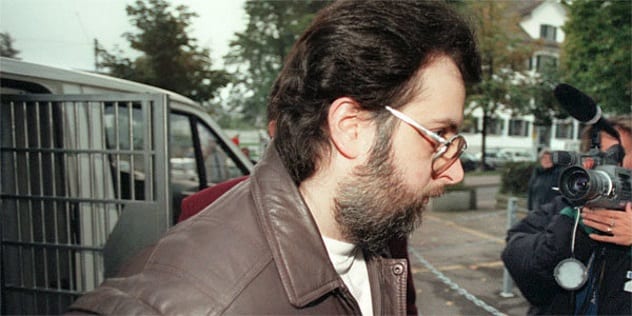
No serial sex offender and murderer is more reviled in the sleepy nation of Switzerland than Erich Hauert. Hauert’s name became infamous on October 30, 1993, when police in Zurich found the body of missing 20-year-old Pasquale Brumann, a scout leader. Brumann’s corpse left no doubt about how she had died: She had been stabbed in the neck by an unknown hand.
On November 1, 1993, police arrested Hauert for Brumann’s murder. Police knew Hauert’s name well, for the ex-con had 11 previous convictions for rape and two murders. In 1982, Hauert had raped and murdered a 26-year-old whom he found jogging near Lake Zurich. A year later, Hauert killed again. This time, the victim was a 72-year-old woman. Hauert confessed to these crimes and was originally sentenced to life in prison. However, over time, his sentence had been reduced. Brumann died because of a prison program that allowed Hauert to have unaccompanied leave for a certain period of time.[9]
It was Hauert’s case, along with the rape of a 13-year-old girl in 1996, that is often cited as the reason why Swiss voters in 2004 choose to support mandatory life sentences for dangerous sex offenders. As for Hauert himself, he was sentenced to life in prison for a second time in 1996. Brumann’s mother sued the Canton of Zurich for their lax handling of the serial sex offender.
2 Death-Keeper

Roger Andermatt, a seemingly normal nurse from Lucerne, is the most prolific serial killer in Swiss history. On January 29, 2005, Andermatt, known as the “Death-Keeper of Lucerne,” was sentenced to life in prison for murdering 22 of his patients. Most of Andermatt’s victims resided at nursing homes and were between the ages of 66 and 95. Andermatt typically carried out his crimes by first injecting his victims with lethal doses of tranquilizers. Then we would use plastic bags to smother them to death.
When not working with elderly patients at nursing homes, Andermatt was a dance teacher and moonlighted as a DJ under the name “R.O.-Gee.” Andermatt and his defense team actually tried to convince the Swiss jury that the 36-year-old nurse killed his victims out of sympathy. Namely, Andermatt claimed that he no longer wanted to see the elderly patients suffer and hit upon the idea of killing them as a benevolent act. Although initially tried for 22 killings, Andermatt actually admitted to 27 murders in total.[10]
Ironically, euthanasia is legal in all of the Swiss cantons that Andermatt killed in, but Andermatt failed to follow the nation’s strict compliance regulations.
1 The Ruhr Cannibal
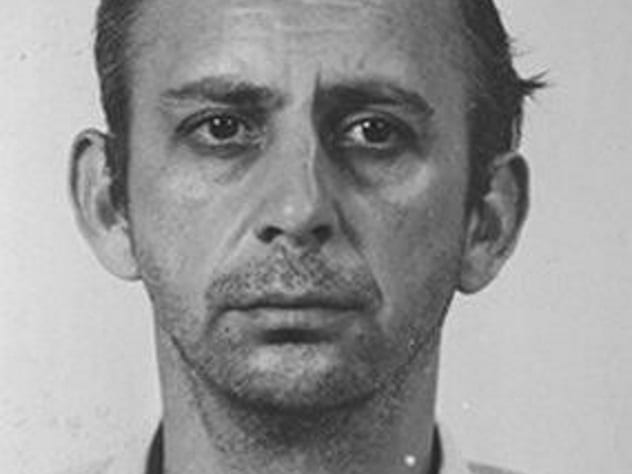
Joachim Kroll can be seen as Germany’s Jeffrey Dahmer, except that Kroll killed 14 people before anyone knew who Dahmer was. Born in Silesia in what is now the Polish city of Zabrze, Kroll grew up as the sixth child in a family of nine. Kroll’s father was a coal miner who wound up as a prisoner of war during World War II. During that time period, the Kroll family moved west to the region of North Rhine-Westphalia.
Kroll’s reign of terror started in the year 1955. His first victim was 19-year-old Irmgard Strehl, whom Kroll raped, stabbed, and mutilated. Kroll’s other victims included 15-year-old Manuel Knodt, whom Kroll murdered, raped, and cannibalized in July 1959; 13-year-old Petra Giese, who died around Easter 1962; and 20-year-old Ursula Rohling in September 1966. Kroll managed to get away with this bloodletting thanks to shoddy police work. Other men were accused and convicted of Kroll’s crimes, including Vinzenz Kuenh, who was convicted of the Giese murder. Walter Quicker was the prime suspect in the murder of 13-year-old Monika Tafel and eventually committed suicide. Adolf Schickel, Rohling’s boyfriend, was suspected in her murder and also killed himself.
For 21 years, Kroll killed, mutilated, and cannibalized victims all along Germany’s Ruhr Valley. His luck ran out in July 1976, when Kroll casually told one of his neighbors that the toilet that they shared was clogged up with entrails. When the neighbor told the police about the 43-year-old man’s strange confession, investigators arrived at Kroll’s apartment and found a liver, two lungs, two kidneys, and a heart cooking on Kroll’s stove. The body parts, the police discovered, came from a four-year-old girl. That girl was none other than a missing child named Marion Ketter.
At his trial, Kroll admitted to murdering 14 people. As for why he practiced cannibalism, Kroll said matter-of-factly that eating human flesh cut down on his monthly grocery bill. Kroll was sentenced to life in prison and died there of a heart attack in 1991.[11]
Read about more terrifying serial killers from around the world on 10 Truly Monstrous Serial Killers From Around The World and 10 Female Serial Killers From Around The World.

![10 Creepiest Photos Of Victims Taken By Serial Killers [DISTURBING] 10 Creepiest Photos Of Victims Taken By Serial Killers [DISTURBING]](https://listverse.com/wp-content/uploads/2018/09/Regina-Kay-Walters-featured-2-150x150.jpg)

